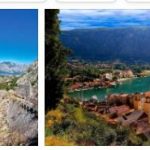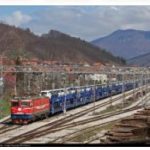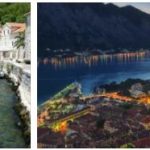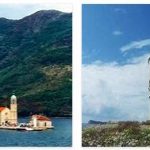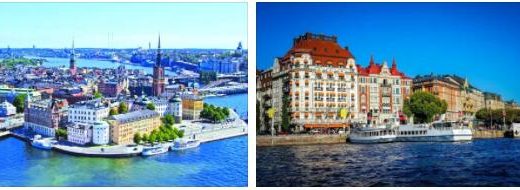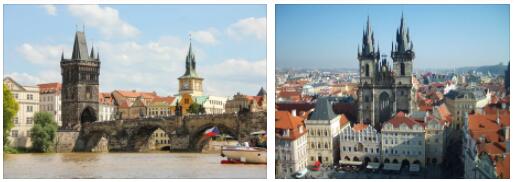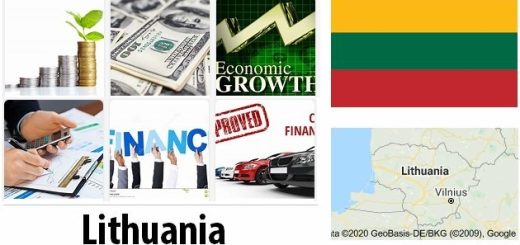Montenegro Economy Facts
Economical overview
After major problems in connection with the crisis in the world economy from 2008 and then the euro crisis in 2012, the Montenegrin economy had begun to recover in the mid-2010s. However, the country has been struggling for years to gain control of the high budget deficit, and this is strongly dependent on the fact that it comes from tourists as well as investments from abroad.
When Montenegro became independent from Serbia in 2006 there was a concern about how the small country would manage financially on its own. At the same time, many Montenegrins felt a strong optimism for the future, despite the fact that Montenegro was also badly affected by the disintegration of Yugoslavia with war and international sanctions as a result. The 1999 bombing of NATO had led to ruined infrastructure, but also a lack of fuel and other goods, which caused phenomena such as smuggling and black jobs to take root and then become difficult to get rid of (see Modern History).
- Countryaah.com: Major imports by Montenegro, covering a full list of top products imported by the country and trade value for each product category.
The Montenegro government hoped for a rapid EU membership as a solution to the problems and saw tourism as a major future source of income. Even before the war, the government had taken control of the economy of the sub-republic and foreign trade, including its own taxes and duties. In 1999, instead of the Yugoslav dinar, Montenegro decided to introduce the German D mark as the official currency so as not to be affected by inflation in Serbia. One year later, the dinar was completely abolished in Montenegro and since 2002 the euro is the official currency, despite the country (not yet) being a member of the EU and currency cooperation EMU. In many ways, the country was financially independent long before the union with Serbia broke up.
A number of economic reforms have been implemented in Montenegro, such as the introduction of VAT as early as 2003 (2006 saw a 7 percent difference in VAT for the tourism sector and general VAT of 17 percent; the latter was increased in 2013 to 19 percent) and the region’s lowest corporate tax rate (9 percent). A so-called flat tax of 15 percent on income was introduced in 2007 and lowered in 2009 to 9 percent.
The privatization of the companies has taken place faster and with greater emphasis than in Serbia. At independence, more than 70 percent of the companies were already privately owned, in the mid-2010s around 85 percent. The banks, telecommunications and the oil industry were completely privatized as early as 2009. What remains are primarily old, state-owned companies that are difficult to find suitable owners for.
- Abbreviationfinder.org: Check this abbreviation website to find three letter ISO codes for all countries in the world, including MNE which represents the country of Montenegro. Check findjobdescriptions to learn more about Montenegro.
Independent Montenegro hoped for – and received – increased foreign investment, especially in the tourism, banking and construction industries. For several years, the Montenegrin economy was one of the fastest growing in Europe: in 2007, gross domestic product (GDP) increased by almost 11 percent and the country experienced a huge construction boom, especially in the tourism industry, with the help of mainly Russian and British money.
The Stabilization and Association Agreement with the EU in 2007 meant that the country could receive credits from the European Development Bank (EBRD), which mainly focused on the backlog infrastructure. The important port of Bar, as well as the state railway, was partially privatized, which enabled an upgrading.
At the same time, Montenegro became dependent on foreign investment. The global financial crisis, which started in autumn 2008, therefore hit the country particularly hard when both investors and tourists failed. Although the economy recovered in 2010–2011, the recovery came off as a result of the euro crisis in 2012. After that, however, growth in the economy again, while foreign investment per person is among the highest in Europe. However, growth has not benefited everyone; above all, the inland regions have lagged behind.
One problem throughout the 2000s has also been the state’s budget deficit. The reasons for this are, among other things, large wage increases for government employees, deficits in health insurance and pension systems and subsidies to state-owned companies. For example, some unprofitable companies have received reduced electricity prices in order to cope with operations and not have to terminate staff. (In contrast, electricity prices have been raised for private individuals, which has led to protests.)
In its budget for 2017, the government has refrained from proposals to increase VAT and income tax, all in order to avoid popular protests. On the other hand, it wants to impose a tax on fuel and reduce the salaries of the highest paid civil servants, including the president and the prime minister.
The political opposition has criticized that the government also does not care about cutting the large public bureaucracy or demanding large portions of all the taxes that the companies owe the state. All this will lead to an increased budget deficit, which is expected to be financed with loans.
Privatization has continued, but with the downturn in the world economy, it has become more difficult to find buyers. This applies, among other things, to the airline Montenegro Airlines, which however, at the end of 2015, started a collaboration with Etihad Airways from the United Arab Emirates to keep costs down. In early 2017, a similar collaboration with Qatar Airways began. One of the country’s largest companies, the aluminum plant KAP, had been sold to the Russian oligarch Oleg Deripaska but had major problems in the wake of the financial crisis in 2008, when demand for aluminum fell. It ended with the Montenegrin state, after protests among KAP’s staff, in 2012 was forced to buy back the company so that it would not go bankrupt. At the end of 2016, Deripaska sued the Montenegrin state for hundreds of millions of euros as compensation for its losses in the KAP deal.
In connection with some privatizations, there are suspicions of bribery and black money under the table. It is precisely the corruption, as well as the rumors of contacts in the government with organized crime, is something that the EU is watching in the membership negotiations that started with Montenegro in 2012. The governing, the EU believes, must show that it is the rules of democracy and the rule of law that apply in Montenegro.
Montenegro has a deficit in both trade and current account balances. The latter has decreased in the 2010s due to higher tourism revenues.
FACTS – FINANCE
GDP per person
US $ 8,761 (2018)
Total GDP
US $ 5,452 million (2018)
GDP growth
4.9 percent (2018)
Agriculture’s share of GDP
6.8 percent (2017)
Manufacturing industry’s share of GDP
3.8 percent (2017)
The service sector’s share of GDP
59.1 percent (2017)
Inflation
1.1 percent (2019)
Government debt’s share of GDP
72.6 percent (2018)
External debt
US $ 3,138 million (2017)
Currency
Euro
Merchandise exports
US $ 514 million (2018)
Imports
US $ 2,928 million (2018)
Current account
– US $ 943 million (2018)
Commodity trade’s share of GDP
64 percent (2018)
Main export goods
raw materials, aluminum, machinery and transport equipment

